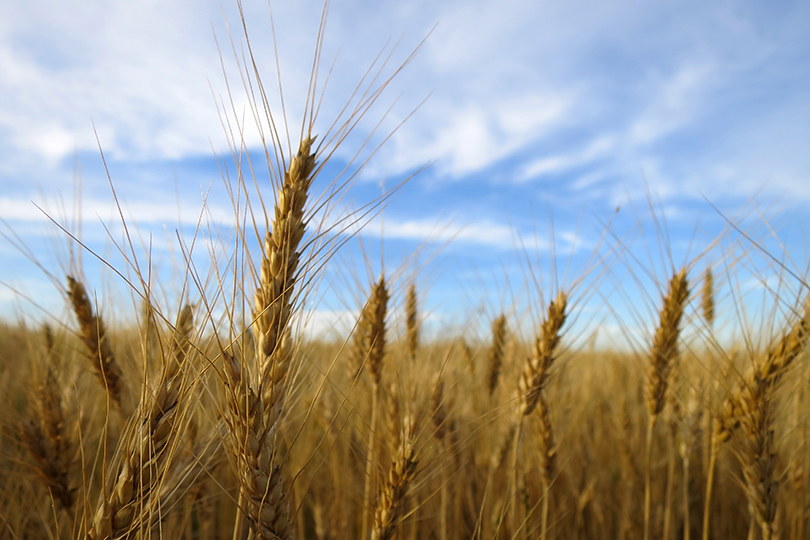By Shala Watson
Staff Writer
Texas is ranked fifth in the nation for wheat production, generating 106.5 million bushels in 2015, according to U.S. Department of Agriculture’s (USDA) National Agricultural Statistics Service (NASS) data. But that could change if the wheat market remains low.
An abundant wheat supply is forcing prices down, making it increasingly difficult for farmers to see a profit. Extension specialists say Texas wheat plantings could drop as much as 20 percent this fall.
“I know in Texas we saw a 13 percent drop in acreage this past year,” Texas A&M AgriLife Extension Small Grains Specialist Dr. Clark Neely said in an interview with Texas Farm Bureau (TFB) Radio Network. “We typically plant around 6 million acres. This past year was 5.3 million. So we expect it to continue to go down from there.”
Farmers in the largest wheat production areas of the state, like the High Plains, may even be cutting back.
Extension Agronomist Dr. Jourdan Bell agreed. She’s noticed a drop in wheat plantings in the region compared to normal.
“Farmers in the Panhandle recognize the value of wheat with its regard to grazing or even just simply as the residue,” Bell said during an interview with Farm Bureau Roundup reporter James Hunt of Amarillo for the TFB Radio Network. “How important that [wheat] residue is to the subsequent crop, how it minimizes evaporation, minimizes soil loss and erosion—they see the value in that crop, but it does seem that we do not have as much wheat planted at this time as we normally do.”
Neely said some farmers are choosing to replace their wheat acreage with warm season crops like corn.
“Instead of planting wheat this fall, it will be fallow during the winter,” Neely said. “Then they will come in and plant corn in the spring time.”
Neely said there has been some heightened interest in canola as a cool season rotational crop with wheat.
“Prices are a little bit more favorable on it [canola]. So we may see a slight bump in acreage, but that’s still a pretty minor crop at this point,” he said.
Farmers are looking for ways to see any profit from their wheat crops. Neely recommended several cost-saving measures farmers can implement to help decrease production expenses without significantly affecting yield and grain quality.
He recommends planting insect or disease resistant varieties of wheat to maintain yield potential or to reduce input costs.
“If you pick a wheat variety that is resistant to leaf or stripe rust, you maintain yield potential in that variety,” Neely said. “You can potentially reduce input costs by reducing fungicide application.”
Neely also recommends planting resistant varieties in areas like the Rolling Plains that have a consistent Hessian Fly problem.
“There’s really not much you can do once you have Hessian Fly,” Neely said. “You can’t spray an insecticide, so that’s one way to at least maintain your yield potential.”
Other ways farmers can cut costs is by taking soil samples when they suspect nitrogen residuals from a failed crop. Although soil samples may cost farmers more upfront, it could save a considerable amount of money on fertilizer application costs later, according to Neely.
“If you happen to have a failed crop where you fertilized to meet optimal yield and then for whatever reason you lost that crop through drought, flooding, hail, what have you, you may have a lot of nitrogen you applied that the crop didn’t use and a lot of that might be available for the following crop,” Neely said.
Another way for farmers to save on input costs is through using the banding method of fertilizing.
Research has proven that in drier regions like the Rolling Plains, banding phosphorus when fertilizing versus broadcasting cuts fertilizer costs and helps improve yields.
Reduced planting rates is another method farmers can use to save costs.
Higher planting rates have shown no advantages in trials, according to Neely. He said the trials evaluated planting rates at 30-60-90-120 pounds per acre and there is no advantage by going above 60 pounds per acre.
“We may have seen a slight bump from 30 to 60, but in almost every case we saw no advantage by going above that,” Neely said. “That is an easy way to cut input costs.”
He says farmers should also always follow good management pr


What else could be planted in place of wheat????? we rotate dryland wheat, milo and leaveout